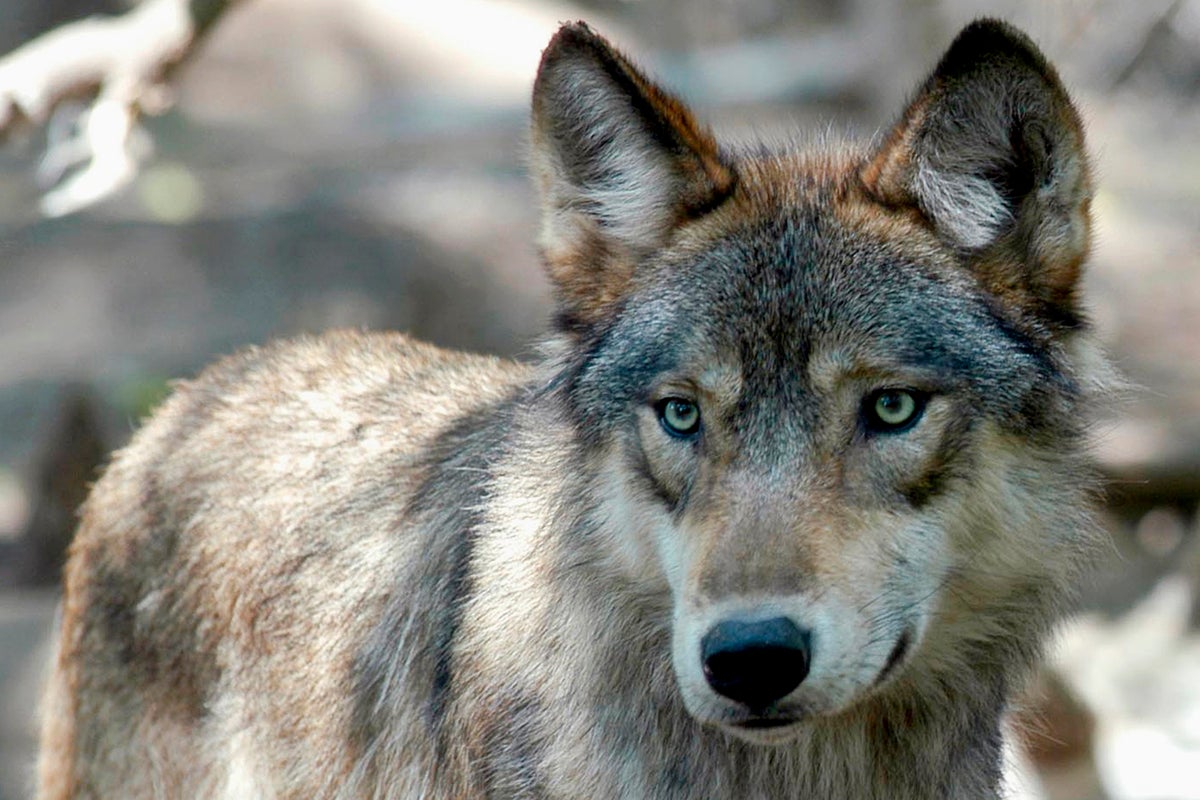
Wisconsin wildlife officials released a revised draft wolf management plan Tuesday that recommends holding the statewide population at around 1,000 animals, a concession to conservatives looking for a hard limit.
The Department of Natural Resources adopted a wolf management plan in 1999 that calls for capping the statewide population at 350 wolves. The population has roughly tripled since then, leading to occasional wolf attacks on pets, hunting dogs and livestock. Hunters and farmers have pointed to the 350-animal limit as justification for generous kill quotas, angering animal rights advocates.
The department released a draft of a new wolf management plan in November. The proposal didn't include a hard population goal, instead recommending that advisory committees monitor local wolf populations and decide whether to reduce them, maintain them or allow them to grow.
The draft wasn't well received by hunters, farmers and GOP legislators. State Rep. Chanz Green and state Sen. Rob Stafsholt introduced a bill in March that would require the DNR to set a statewide population goal in its new plan. The measure has yet to get a hearing.
The plan the DNR unveiled Tuesday still doesn't set a hard population goal. But it does include a chart laying out recommendations on when to reduce the statewide population, when it would be considered stable and when to let it grow.
If the number of wolves falls below 799, wildlife officials should look to grow the statewide population, according to the plan. If the population stands at 800 to 999 wolves, the population could grow or be considered stable. If the population stands at between 1,000 and 1,199 wolves, the population would be considered stable or could be reduced. If the number of animals grows to 1,200 or more, the population should be reduced.
“This approach is expected to generally maintain statewide wolf abundance and distribution at levels comparable to recent years,” Larry Johnson, a DNR large carnivore specialist who wrote the plan, said during a news conference. “The better question is can we make good decisions on the information we have? I think we're in a good place here.”
The new draft retains provisions from the original that call for reducing the window for registering wolf kills from 24 hours to eight hours and issuing hunting licenses for specific wolf management zones. Right now wolf licenses are valid in any of the state's six zones.
The DNR’s policy board is expected to vote in October on whether to adopt the management plan.
Former Republican Gov. Scott Walker signed a bill in 2012 establishing an annual fall wolf hunt in the state. The hunt became one of the most contentious outdoor issues the state has ever faced. Ranchers and farmers say they need to protect their livestock from wolf attacks; the DNR has paid out about $3.2 million in compensation for wolf attacks since 1985. Animal rights advocates counter that the wolf population isn't strong enough to support hunting.
A federal judge in February 2022 restored endangered species protections for gray wolves across most of the country, including Wisconsin. The move outlawed hunting the animal. Wisconsin did not hold a wolf season last fall.







